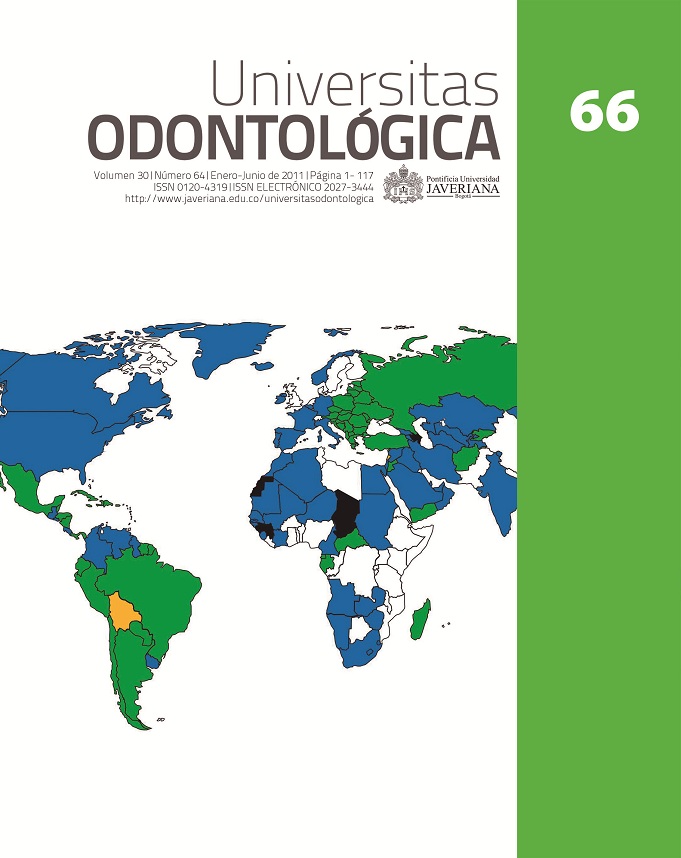Resumen
El diente invaginado es una malformación que resulta probablemente de un desdoblamiento de la papila dental durante el desarrollo dentario. Los dens invaginatus son dientes clínicamente significativos, debido a la gran facilidad de afección de la pulpa. La profundidad del defecto estructural varía de una leve ampliación del cíngulo a una invaginación que se extiende al ápice. El presente artículo relata el caso de una mujer de veintitrés años de edad, quien refiere una fístula de diez años de evolución en la mucosa en el fondo de saco a la altura del diente lateral superior izquierdo (diente 22). Luego de la exploración clínica y radiográfica se diagnostica un dens in dente unilateral con necrosis pulpar y absceso apical crónico, para lo cual se realizó terapia de conductos y cirugía apical con éxito radiográfico de dos años de evolución.
Invaginated tooth is a malformation likely resulting from a splitting of dental papilla during tooth development. Dens invaginatus are clinically important teeth due to the easy affection of the dental pulp. Invagination depth varies from a slight enlargement of the cingulum unto an extended invagination to the apex. This article reports the case of a female patient aged 23, who referred fistula with ten years of evolution in tooth 22. The clinical and radiographic diagnosis was dens in dent with necrosis and chronic suppurative periapical periodontitis. The root canal therapy and apical surgery were performed showing successfully radiographic evolution within a two-year follow-up period.
Esta revista científica se encuentra registrada bajo la licencia Creative Commons Reconocimiento 4.0 Internacional. Por lo tanto, esta obra se puede reproducir, distribuir y comunicar públicamente en formato digital, siempre que se reconozca el nombre de los autores y a la Pontificia Universidad Javeriana. Se permite citar, adaptar, transformar, autoarchivar, republicar y crear a partir del material, para cualquier finalidad (incluso comercial), siempre que se reconozca adecuadamente la autoría, se proporcione un enlace a la obra original y se indique si se han realizado cambios. La Pontificia Universidad Javeriana no retiene los derechos sobre las obras publicadas y los contenidos son responsabilidad exclusiva de los autores, quienes conservan sus derechos morales, intelectuales, de privacidad y publicidad.
El aval sobre la intervención de la obra (revisión, corrección de estilo, traducción, diagramación) y su posterior divulgación se otorga mediante una licencia de uso y no a través de una cesión de derechos, lo que representa que la revista y la Pontificia Universidad Javeriana se eximen de cualquier responsabilidad que se pueda derivar de una mala práctica ética por parte de los autores. En consecuencia de la protección brindada por la licencia de uso, la revista no se encuentra en la obligación de publicar retractaciones o modificar la información ya publicada, a no ser que la errata surja del proceso de gestión editorial. La publicación de contenidos en esta revista no representa regalías para los contribuyentes.


